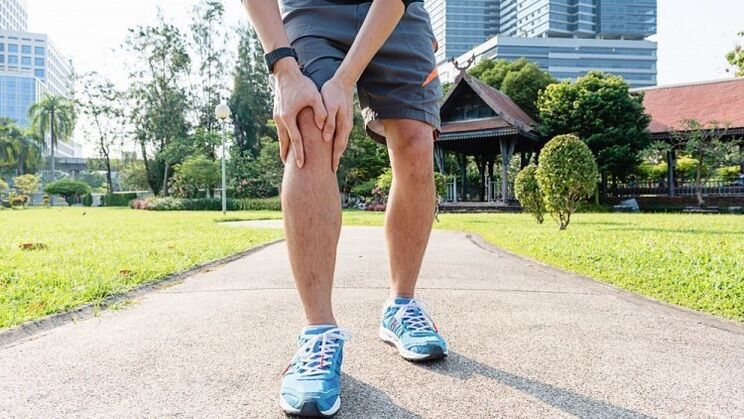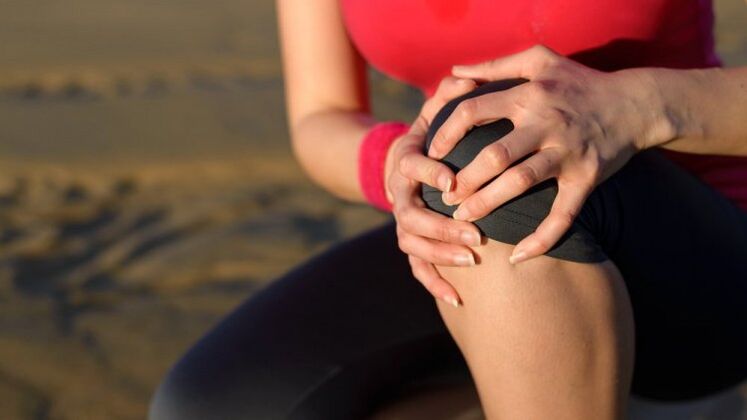Our joints are very healthy. The ends of the bones fit exactly together and are covered with cartilage from above for better sliding. The joint itself is protected by the joint capsule, and the ligaments and muscles strengthen it forward, backward, and sideways. Inside the wrist capsule there is a special fluid that ensures smooth movement without cracking, creaking and creaking. This is how healthy joints work. And what happens to them with osteoarthritis?
How and why osteoarthritis occurs: obesity, trauma, arthritis
To begin with, how does osteoarthritis differ from arthritis? Arthritis is inflammation of the joints and can be treated and treated until complete recovery. With osteoarthritis, the cartilage on the articular surfaces of the bones deforms, thins, loses elasticity, is covered with cracks and stratifies, the amount of synovial fluid decreases. And these changes are already, unfortunately, irreversible. Hence, this disease is called degenerative, i. e. destructive. The destruction of the joint is affected by age - over time cartilage is consumed, but at the heart of everything is our upright posture, due to which a large load is placed on the knee joints.
Gonarthrosis is osteoarthritis of the knee joint. This type of osteoarthritis is more common in women and is aggravated by obesity and venous diseases. Many older people suffer from osteoarthritis, which is explained by age-related changes in the joints. At a young age, osteoarthritis can appear with joint injuries during sports or with high physical exertion. Furthermore, the development of osteoarthritis is affected by weak ligaments and muscles in the knee area, a sedentary lifestyle, arthritis, stress and metabolic disorders, and in everyday life - high-heeled shoes and weight bearing (e. g. , shopping bags). Joint damage is bilateral, but can also develop in one leg.
Manifestations of osteoarthritis: pain, cracking, stiffness

Knee pain, cracking, stiffness during bending and stretching of the ankle, especially when a person gets up and down - these are all signs of osteoarthritis of the knee joint. However, the pain does not come suddenly. At the onset of the disease, there is more discomfort in the knee, which turns into pain with strenuous effort, running and exercise. If the pain is acute, it may be accompanied by dislocation, spasm, meniscus damage (elastic cartilage cushion in the wrist).
With grade 2 osteoarthritis, knee pain becomes a frequent accompaniment, especially noticeable after long walks, lifting weights. If you rest the wrist, the pain disappears but returns again when the load resumes. An additional symptom of osteoarthritis is swelling of the knee joint. In addition, there is an excessive accumulation of synovial fluid (synovium), a characteristic crack during movement, in which pain appears and then limited mobility in the knee. The patient is unable to bend and lift the leg easily. Trying to run it completely causes severe pain.
When osteoarthritis reaches the third degree, the knee joint sometimes completely loses its mobility. People walk with their legs slightly bent at the knees, suffer from excruciating pain that often occurs when the weather changes, and may struggle at rest, including at night. Patients should use painkillers. At this stage, it is also possible to change the shape of the legs - they bend either from the outside (one-wheeled legs) or from the inside. It is not uncommon for people to rub their sore knees, intuitively trying to improve blood flow to them.
Treatment of osteoarthritis: weight loss, movement is life

The diagnosis of osteoarthritis is made by X-ray examination. Typical changes are narrowing of the joint space, the appearance of osteophytes (salt deposits), bone destruction. Many patients come to the doctor at the stage when it becomes problematic to fall asleep at night without anesthesia. Although key changes are irreversible, there are some things you can do to improve a patient's life. Treatment of osteoarthritis begins with weight loss. Furthermore, it will be necessary to rely on a rational diet and not too many calories, as the possibility of physical activity is limited. This is the first thing any doctor will tell a patient with osteoarthritis of the knee.
The second aspect of treating osteoarthritis is, surprisingly, movement. When changes in the joints are not yet fatal, not in the final stage, only the movements - but the movements are correct! - can extend their life. There is no blood vessel in the cartilage, food is diffused and to continue the exchange, in order for the cells to renew and the cartilage to live, movement is necessary.
But which moves need to be considered accurate? Of course, those that do not load the knee joint. Let's not bother the reader - the best sport for osteoarthritis is swimming. This is an excellent exercise of the ligaments, cartilage, muscles without vertical load, which is given by walking and standing. It is necessary to avoid running, sports games, jumping. Yes, joint pain and will not allow you to accelerate particularly.
The second method of movement is suitable for those who visit the gym or have bought a home simulator called an ellipsoid. Looks like a walking bike and at the same time like cross-country skiing. When working on this simulator, we avoid impact loads on the knee joints and at the same time train the muscles and ligaments. The ellipsoid moves smoothly, but gives a not weak aerobic load, therefore, by training on it, we also solve the problem of excess weight.
Medical and surgical treatment of the knee joint

As for the medical part of treating osteoarthritis, it is the use of nonsteroidal anti-inflammatory drugs for pain. The doctor will help you choose a dose that will remove the pain and inflammation (and will still be present), and swelling. Sometimes analgesics are added, as the pain can be very strong - they interfere with sleep, interfere with eating and generally interfere with life. In some cases, it is about prescribing antidepressants.
If, despite all efforts, the prescribed treatment of osteoarthritis does not help, and the destruction of the joint continues, leading to complete immobility (and, as you know, the less we move, the faster the fat layer grows), there isa radical remedy - surgical replacement of diseased ankle in prosthesis. It consists of an imitation of the edge of the femur (upper) and the meniscus, which fit on the surface of the tibia (lower). The operation is not simple, but determined and, one might say, routine. There are many of them in the world. After surgery, a rehabilitation program has been developed that allows a person not only to start moving, but to return to a full and active lifestyle.



















